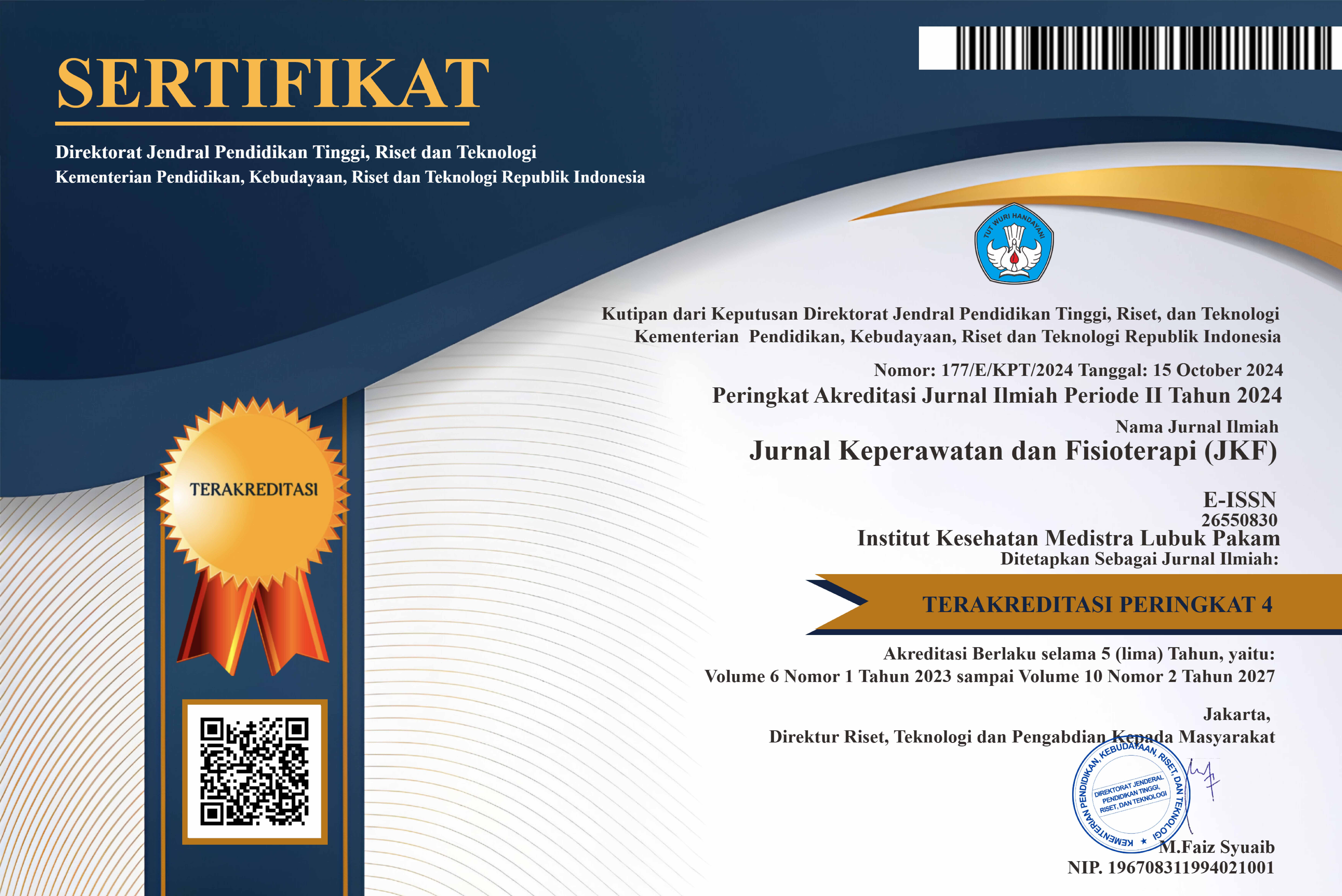DIFFERENCES INFLUENCE OF AQUATIC THERAPY AND NEURO DEVELOPMENTAL TREATMENT ON THE MOTOR FUNCTIONAL DEVELOPMENT ABILITY OF CHILDREN WITH CEREBRAL PALSY
DOI:
https://doi.org/10.35451/jkf.v2i2.413Keywords:
Keyword: aquatic therapy, neuro developmental treatment, functional motor development ability, cerebral palsy.Abstract
Cerebral Palsy (CP) is a motor disability disorder that most commonly occurs in children so that sufferers are unable to perform functional activities independently and need special service. Aquatic therapy and neuro developmental are interventions of physical therapy to help improve the motor functional development ability. The purpose of research is to find out the difference between aquatic therapy and neuro developmental treatment on the motor functional development ability of children with cerebral palsy. The type of research is quasi-experimental research with a pretest and posttest design. The subject of the research is the cerebral palsy community in Yogyakarta, namely Wahana Keluarga Cerebral Palsy (WKCP). The mann-whitney test use to test the hypothesis statistically.The results are difference in influence from aquatic therapy and neuro developmental treatment on the motor functional development ability of children with cerebral palsy, especially in the dimension of sitting, crawling and kneeling, standing, walking, running and jumping, and not for dimension of supine and prone. The conclusion is aquatic exercise is more influential on the motor functional development ability of children with cerebral palsy compared to neuro developmental treatment.
Downloads
Downloads
Published
Issue
Section
License
Copyright in each article is the property of the Author.


























